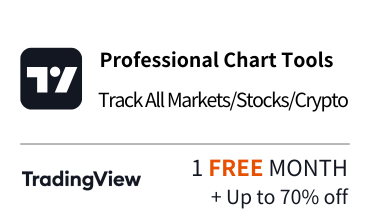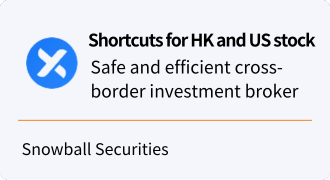A Beginners' Guide to U.S. Stock Financing and Leveraged Trading
[DISCLAIMER] This article is for educational and informational purposes only and does not constitute investment advice. Readers should consult with qualified financial professionals before making any investment decisions.
As a professional with over twenty years of experience in the financial field, I am often asked about U.S. stock financing and leveraged trading. These tools are the double-edged swords of the financial world, magnifying gains and potentially exacerbating losses. Today, let's dive into a topic that is both exciting and risky.
Imagine you are playing a financial version of Super Mario. Financing and leverage are like the “mushrooms” in the game, making your Mario bigger and stronger, jumping higher and running faster. But at the same time, it also makes you more vulnerable to “turtles” and “cannibals”. Doesn't it sound exciting and a bit dangerous? Let's find out how to enjoy the thrill and stay safe in this game.
Ⅰ. What is financing?
Margin trading, also known as “financing and financing” in the U.S. stock market, is a mechanism that allows investors to borrow funds or securities from brokerage firms to conduct transactions.
- Financing: Investors borrow funds to buy securities.
- Financing: Investors borrow securities and sell them.
Differences in Margin Rates for Margin Financing and Securities Financing
When we delve into financing and securities financing transactions, we need to understand an important concept: margin rates may vary from stock to stock. This difference applies to both financing and securities financing. Let us understand this mechanism in detail:
Common Influencing Factors
- Stock Volatility: Stocks with high volatility usually require higher margin rates, both for financing and for financing. This is because these stocks have more unpredictable price movements and higher risks.
- Stock Liquidity: Less liquid stocks may require higher margin rates because they may face greater price pressure when closing out a position.
- Company size and stability: Large, stable blue chip stocks will typically have lower margin rates, while stocks of smaller or emerging companies may require higher margin rates.
- General market conditions: During periods of high market volatility or increased uncertainty, brokerage firms may generally increase margin rates.
- Regulatory Requirements: FINRA and the Securities and Exchange Commission (SEC) have minimum margin requirements, but broker-dealers may set higher requirements based on their own risk assessment.
Financing-specific considerations
- Stock Value: For financing, the stock itself is the collateral. Therefore, the intrinsic value and future prospects of the stock will directly affect the margin rate of the financing.
- Dividend policy: Stocks with high dividends may have lower margin rates for financing because dividends can offset part of the financing cost.
Considerations specific to financing
- Difficulty of shorting: certain stocks may require higher margin rates due to the limited number of shares available for borrowing, making it more difficult to finance.
- Special Event Risk: For example, stocks with upcoming earnings reports or significant corporate events may temporarily increase the margin rate for securities financing.
Illustrative Examples
Let's look at a few specific margin rate examples:
Stable large-cap technology stocks (e.g. Apple or Microsoft):
- Financing: may only require 30-40% margin rate
- Financing: may only require 30-50% margin rate
medium-sized growth stocks:
- Financing: may require a margin rate of 50%.
- Financing: 50-60% margin rate may be required.
small cap or high volatility stocks:
- Small or highly volatile stocks: Financing: may require 60-75% or even higher margins
- Financing: may require a margin rate of 75-100%.
Certain high-risk stocks:
- Brokerage firms may prohibit financing or financing transactions altogether.
Impact of Margin Ratio Differences
- Leverage Effect: Lower margin rates allow investors to use higher leverage, with greater potential returns and risks.
- Money Efficiency: Different margin rates will affect your money allocation strategy. For stocks with higher margin rates, you need to invest more of your own funds.
- Risk Management: Understanding the margin rates of different stocks will help you better assess and manage the overall risk of your portfolio.
- Trading Strategy Adjustment: You may need to adjust your trading strategy and position ratio according to the margin rates of different stocks.
Notes
- Periodic Check: Margin rates may fluctuate, especially during periods of market volatility. It is important to regularly check the latest margin requirements of the stocks you hold or plan to trade.
- Brokerage firm differences: Different brokerage firms may have different margin requirements for the same stock. This may be a consideration when choosing a brokerage firm.
- Risk Awareness: Lower margin rates may induce investors to use excessive leverage. Always be aware of the additional risks associated with leverage.
- Timely Response: If the margin rate is suddenly increased, you may need to make a quick margin call or reduce your position to avoid forced liquidation.
Understanding these details of financing margin rates is crucial to effectively managing your investment risk and optimizing your trading strategy. It reminds us that when trading with Financing Facility, we should not only consider the potential gains, but also fully assess and prepare for the possible risks.
Financing Trading Example
Suppose you are bullish on Apple Inc (AAPL) stock but only have $5,000 on hand. With financing, you can borrow an additional $5,000 from a broker so that you can buy $10,000 worth of Apple stock.
Example of a financing trade
If you think Tesla's (TSLA) stock price will go down, but don't own Tesla stock, you can short it by financing. You borrow 100 shares of Tesla stock from a brokerage firm and sell them immediately, hoping to buy them back and return them to the brokerage firm at a lower price when the stock price falls in the future.
Ⅱ. What is leverage?
Leverage is the use of borrowed funds to invest in order to magnify potential returns (and, of course, potential losses). In the U.S. stock market, the most common leverage ratio is 2:1, meaning you can control a $2 asset with $1 of your own money.
The Power of Leverage
Suppose you use $10,000 of your own funds to control $20,000 of stocks through a leverage of 2:1. If the stock rises 10%:
- Without leverage: $10,000 becomes $11,000 with a 10% return
- With leverage: $20,000 becomes $22,000, minus the $10,000 borrowed, your $10,000 becomes $12,000 for a 20% return
But remember, leverage magnifies losses as well. If the stock falls 10%, your loss rate doubles.
Ⅲ. What is margin?
Margin is the minimum amount of money that an investor needs to deposit when making a financing transaction. It is a risk management measure that protects brokerage firms from the risk of customer default.
There are two main types of margin requirements in the US stock market:
- Initial Margin: The minimum deposit required to open a margin account, usually 50% of the purchasing power.
- Maintenance Margin: The minimum percentage of equity that must be maintained in an account, usually 25%.
Margin Call
If your account equity falls below the maintenance margin requirement, the brokerage firm will issue a margin call. You need to deposit additional funds or sell part of your position to fulfill the requirement, otherwise the brokerage firm may force you to close the position.
Ⅳ. Advantages of financing and leveraged trading
- Amplify return potential
- Increase the efficiency of capital utilization
- Increase investment flexibility
- Possibility of shorting to profit from declines
Ⅴ. Risks and Precautions
- Amplified risk of loss
- Interest cost
- Risk of forced liquidation
- Increased psychological pressure
Ⅵ. How to use financing and leverage safely?
- Fully understand the rules and risks
- Control the leverage ratio and do not use it excessively
- Set stop-loss and strictly enforce risk management
- Maintain sufficient cash buffer
- Check your account status regularly
- Do not use stocks or derivatives with high short-term volatility
Ⅶ. Conclusion
Financing and leveraged trading is like the “nitrogen acceleration” in the financial world, which can make your investment vehicle faster, but at the same time, it also increases the risk of rollover. As a veteran of many market ups and downs, my advice is: don't try these tools until you fully understand them and are able to control your risk.
Remember, there are countless investors buried in the graveyard of Wall Street who think they are smarter than the market. A steady and gradual approach is the key to winning in the long run.
Do you have any experiences or questions about financing or leveraged trading? Feel free to share your thoughts or ask questions in the group. Let's learn and improve together!
Ⅷ. Legal Disclaimer
This article is for educational and informational purposes only and does not constitute any investment advice. Financing and leveraged trading involves a high level of risk and may result in a loss of more than the principal amount. Investors should make prudent decisions based on their own financial situation, investment objectives and risk tolerance. The author and the platform are not responsible for any loss resulting from the use of the information in this article.







